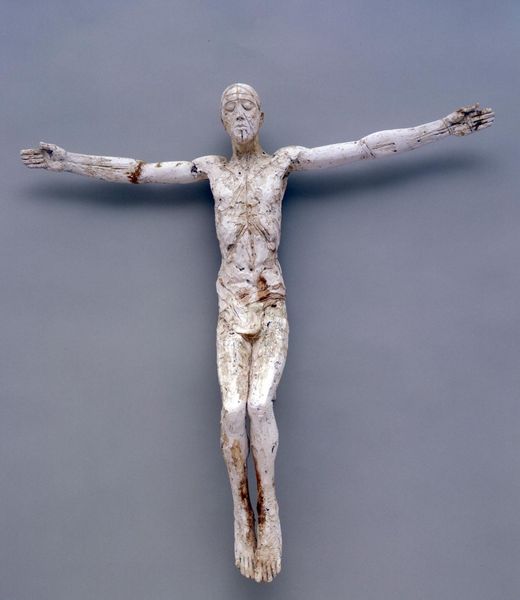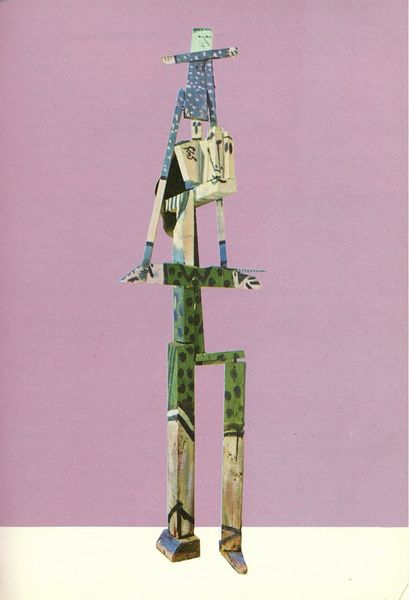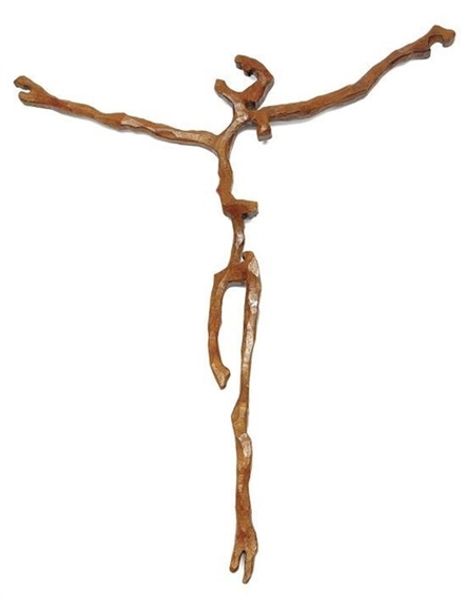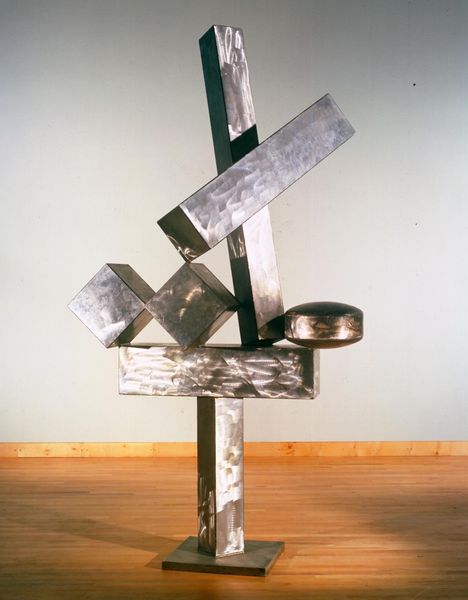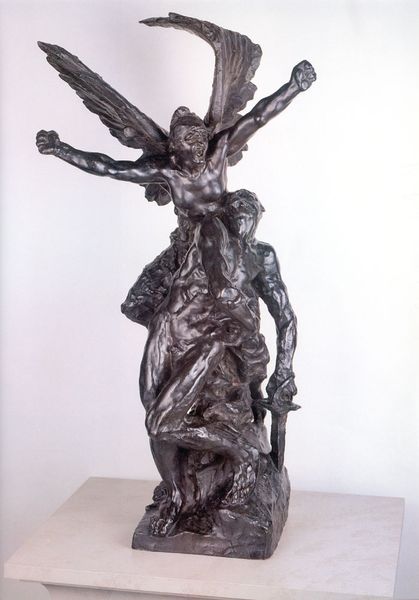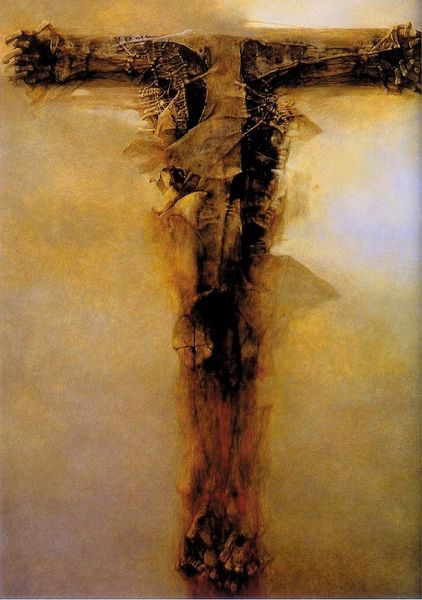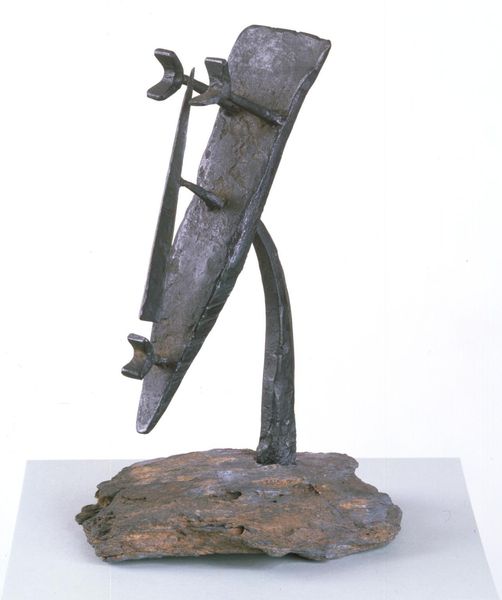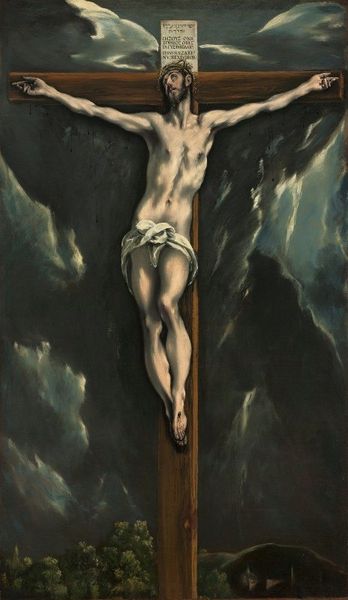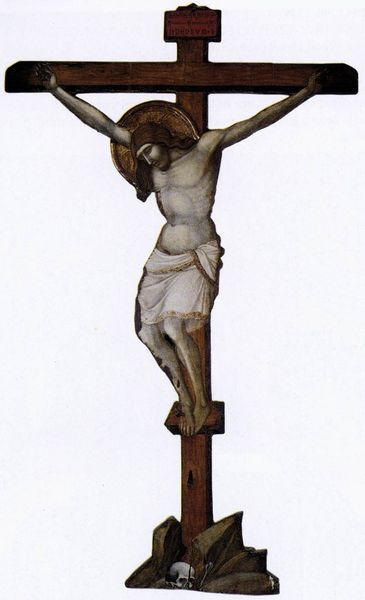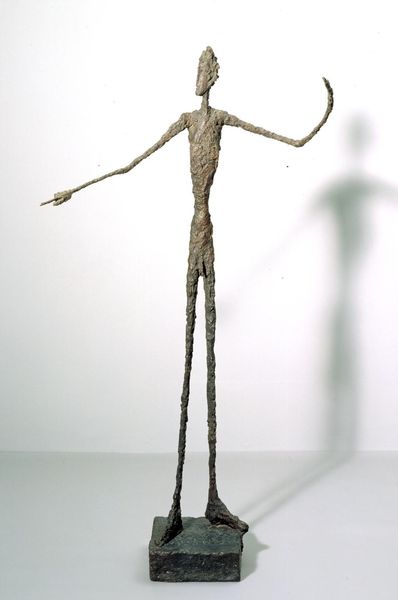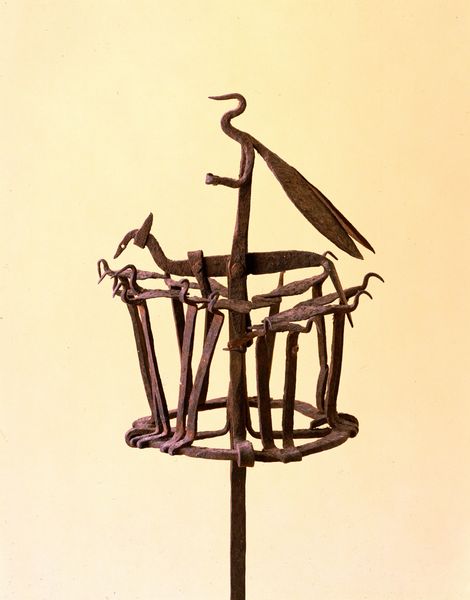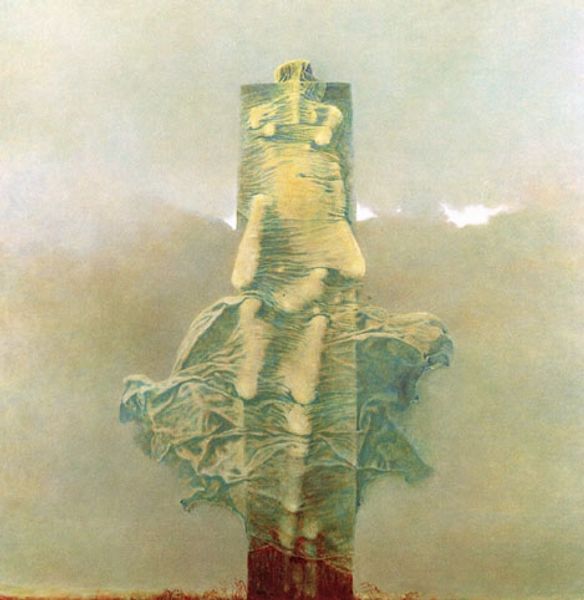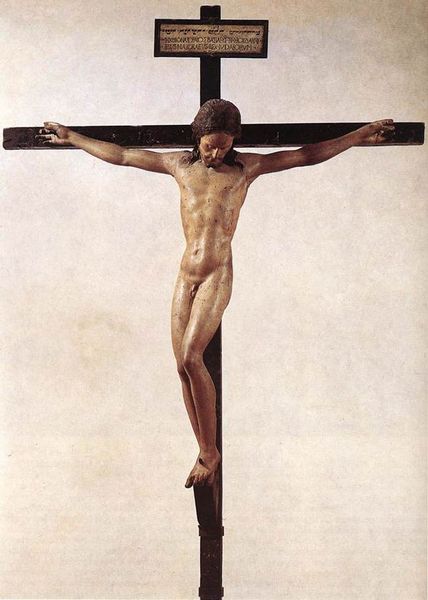
Dimensions: 250 x 115 cm
Copyright: Lubo Kristek,Fair Use
Curator: This evocative mixed-media sculpture, "Barbed Wire of Christ" by Lubo Kristek, dating back to 1983, certainly sparks conversation. Editor: Absolutely. My immediate gut reaction is a feeling of… unease. It’s raw, unsettling. The jagged edges of the wire against the simple wood cross create a powerful contrast, even a kind of violent contradiction. Curator: Kristek was known for these poignant juxtapositions. What intrigues me is his choice of materials, especially the barbed wire. The artist creates tension, an edge between faith and brutality, or perhaps suffering. Editor: Let's drill down into that brutality. The barbed wire isn’t just a symbolic add-on. It is attached to this rudimentally hewn wooden cross, clearly implying physical labor, the processing, and wrapping of the metal, adding layers of human experience to the raw materials used for artmaking. There is intention and meaning to every step. Curator: Right. Thinking of process – he frequently employed found objects, incorporating them into his works as relics or talismans, wouldn't you say? And here the landscape, nature itself becomes complicit. It emphasizes the inherent human drama set against something larger than ourselves. The ocean view makes it particularly tragic, the sheer indifference of nature. Editor: Complicit is a brilliant term. Because this is clearly an environmental installation, or "site-specific", where its location adds to the statement and questions value in both a physical, economical sense and spiritual sense. A desolate monument is constructed of what we are assuming are very inexpensive or waste products. It could suggest commentary on post-war industrialization and mass production devaluing spiritual icons into raw capitalistic products. Curator: It also is conceptually brilliant. The artist invites us to see both the symbol and its inherent contradictions simultaneously. He makes us reflect on both spiritual suffering and contemporary experience. And now the longer I consider the cross… I suppose what is truly startling about the installation is not that it combines opposing elements –barbed wire and an old wooden cross--but it holds on to those things in precarious tension. Kristek holds both in the artwork with reverence! Editor: I see it as an inquiry into how we ascribe value, both economically and symbolically. So, as Kristek so aptly prompts, what do these materials mean now, juxtaposed, in our collective memory? Curator: An apt query with lasting implications!
Comments
No comments
Be the first to comment and join the conversation on the ultimate creative platform.
